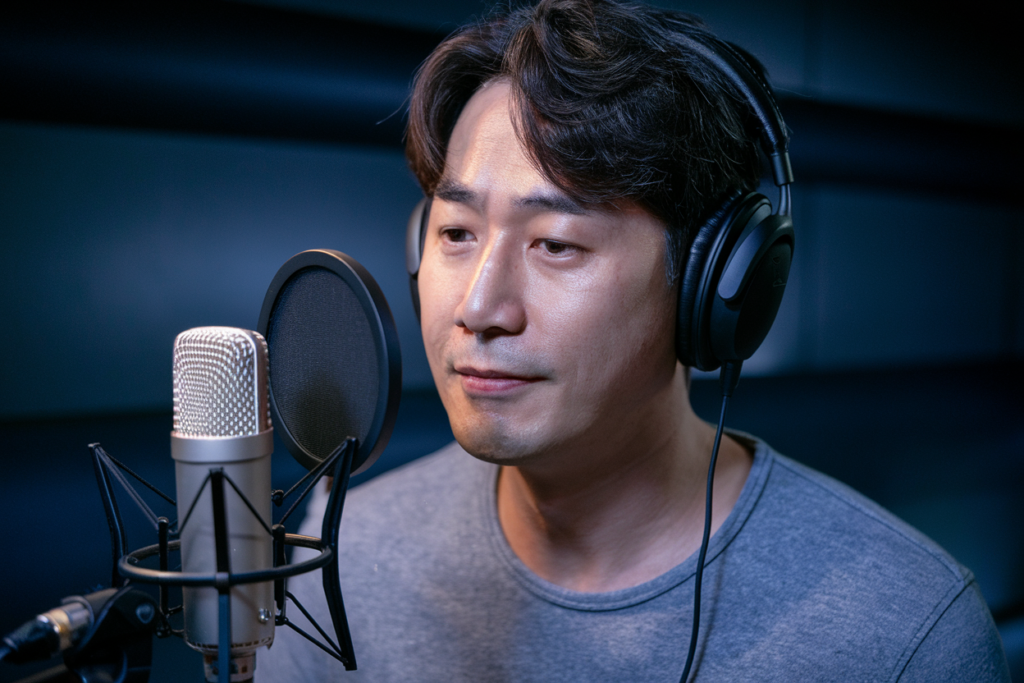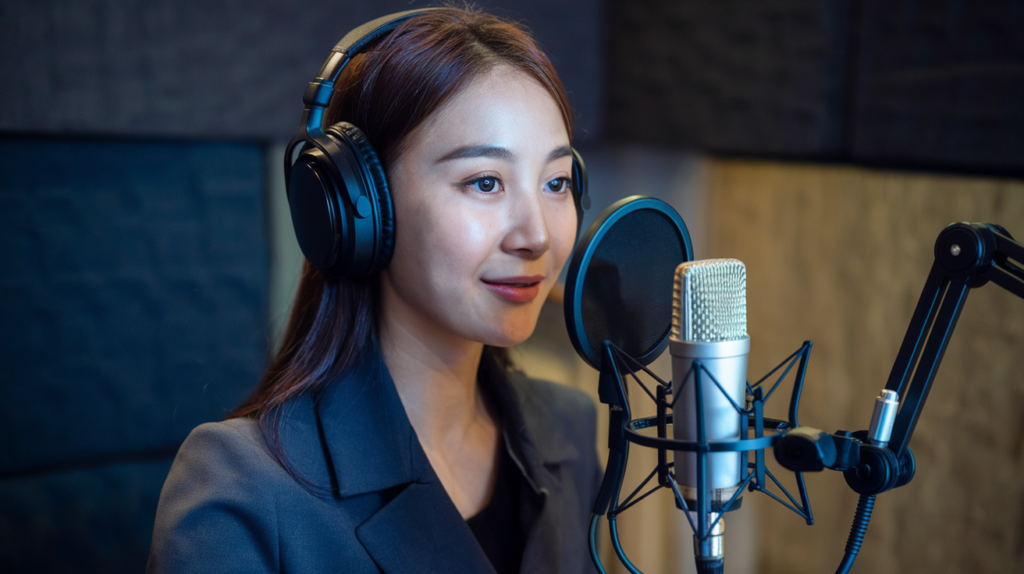Key Takeaways
- Diverse Accents: Korean accents vary significantly by region, each reflecting unique cultural identities and speech patterns.
- Geographical Influence: Accents are shaped by geography, with isolated communities developing distinct pronunciations influenced by local history.
- Cultural Impact: Local traditions and lifestyles contribute to the nuances of regional accents, affecting vocabulary and intonation.
- Major Accents Overview: Key regional accents include Gyeonggido (standardized), Jeolla (soft tones), Gyeongsang (strong vowels), and Chungcheong (melodic).
- Communication Enhancement: Understanding these accents improves clarity in communication, especially in voiceover projects or collaborations within Korea.
- Authenticity in Voiceovers: Selecting voice talent familiar with regional dialects ensures authenticity, enhancing storytelling and audience engagement.
Ever wondered why Korean accents sound so different from one region to another? It’s fascinating how the nuances of language can reveal a lot about culture and identity. In Korea, regional accents not only reflect geographical differences but also showcase unique expressions and intonations that you might find intriguing.
Overview Of Korean Accents
Korean accents vary significantly across regions, reflecting unique cultural identities and local dialects. Each area showcases distinct pronunciation, intonation, and vocabulary, making the language rich and diverse.
In Seoul, the capital city, you’ll notice a more standardized form of Korean often used in media and education. This accent is considered the baseline for formal communication. Southern regions like Busan present a softer intonation with unique slang; locals often use expressions that might baffle outsiders.
The northeastern region of Gangwon-do features an accent characterized by its melodic quality. Residents frequently elongate certain vowel sounds, providing a distinctive musicality to their speech. In contrast, the southwestern Jeolla province highlights clipped consonants and rapid speech patterns.
Understanding these regional variations enhances your appreciation for Korean culture. If you’re exploring voiceover work or needing a voice artist familiar with these nuances, knowing how accents differ can make all the difference in conveying authenticity in projects. Whether you’re seeking a casual tone or something more formal, recognizing these subtleties ensures your message resonates effectively with your audience.
Ultimately, regional accents are vital to understanding not just language but also identity within Korea. As you engage with potential clients or collaborators in this space, remember that embracing these differences can significantly enrich your communication efforts.
Factors Influencing Regional Accents
Regional accents in Korea arise from several key factors that shape how language is spoken across different areas. Understanding these influences can deepen your appreciation for the nuances of Korean, especially if you’re looking to engage with voiceover talent or voice actors who embody these regional characteristics.
Geographical Variations
Geography plays a crucial role in accent formation. Isolated communities often develop distinct speech patterns over generations. For example, mountainous regions may foster unique pronunciations due to limited interaction with other areas. Urban centers like Seoul typically showcase a more standardized form of Korean, influenced by media and education. In contrast, rural regions might retain older forms of speech that reflect local history and culture. This geographical diversity means that when you work with a voice artist familiar with specific dialects, they can bring authenticity to their performances.
Cultural Influences
Cultural heritage significantly shapes accents as well. Different regions boast unique traditions, foods, and lifestyles that contribute to their linguistic identity. Southern areas such as Busan exhibit softer intonations and distinctive slang due to their rich maritime culture and community interactions. Conversely, the northeastern region of Gangwon-do captures its vibrant natural environment through melodic sounds and elongated vowels in speech patterns. When selecting a voice over actor for projects requiring cultural sensitivity, understanding these influences ensures you find someone who can authentically convey the intended message while connecting with the audience on a deeper level.
Incorporating awareness of geographical and cultural variations into your selection process for voiceovers enriches not only communication but also enhances storytelling by resonating with listeners’ experiences and identities across Korea’s diverse landscape.
Major Regional Accents In Korea
Korean accents vary significantly by region, each carrying its own unique character and cultural nuances. Understanding these regional differences can enhance your appreciation for the language and improve communication effectiveness.
Gyeonggido Accent
The Gyeonggido accent, prevalent in the area surrounding Seoul, features a relatively standardized form of Korean. This accent is characterized by clear enunciation and a moderate intonation, making it widely understood across the country. It often serves as a reference point for voiceovers due to its familiarity; many voice talents adopt this style when aiming for broad appeal in their projects.
Jeolla Accent
In contrast, the Jeolla accent showcases softer tones and clipped consonants. Residents in this southwestern province often speak rapidly, which reflects their vibrant local culture. A voice actor with expertise in this accent can bring authenticity to projects set in or connected to Jeolla, enhancing storytelling through a genuine representation of regional speech patterns.
Gyeongsang Accent
The Gyeongsang accent stands out with its distinct intonations and strong vowel sounds. Predominantly found in cities like Busan and Daegu, this accent employs unique slang that gives it personality. When selecting voiceover talent for projects related to this region, consider artists who are not only skilled but also familiar with local expressions; they’ll capture the essence of conversations effectively.
Chungcheong Accent
Lastly, the Chungcheong accent has a melodic quality that sets it apart from others. It blends elements from both northern and southern dialects while maintaining an identity all its own. Voice artists proficient in this accent can add depth to narratives that require a nuanced understanding of various Korean cultures—making them invaluable assets for engaging audiences throughout Korea’s diverse landscape.
Consider how these regional accents impact your project goals when choosing voiceover talent; you want someone who resonates well with your target audience while delivering authentic performances reflective of where they’re from.
The Impact Of Accents On Communication
Accents play a crucial role in how you communicate, especially when it comes to understanding and connecting with others. In Korea, regional accents add layers of meaning that go beyond mere words. They convey cultural nuances, local identities, and even emotional undertones. When communicating across different regions in Korea, recognizing these accents can significantly enhance interaction.
Different accents can affect clarity and comprehension. For instance, if you’re working on a voiceover project or collaborating with Korean clients, awareness of the Gyeongsang accent’s strong vowel sounds versus the Jeolla accent’s softer tones makes a difference. Misunderstandings might arise if you’re not attuned to these variations. This attention to detail ensures your message resonates well with your target audience.
Moreover, accents shape perceptions about authenticity and relatability. A voice artist who can mimic or adapt to specific regional accents demonstrates cultural sensitivity and respect for local traditions. Clients often seek voice talent capable of capturing these subtleties because they enhance storytelling effectiveness.
In contexts like media production or advertising, using the appropriate accent establishes a connection with viewers or listeners. Imagine a narrative enriched by the melodic intonations from Gangwon-do versus one delivered in Seoul’s more standardized form—each creates its unique ambiance that influences audience engagement.
Accent recognition isn’t just an academic exercise; it has practical implications for effective communication strategies. By choosing voice actors familiar with regional dialects and expressions, you align your projects more closely with cultural expectations. This alignment fosters trust and builds rapport between you and your audience—a vital component in any successful campaign or presentation.
Understanding regional accents ultimately transforms how messages are received across different demographics within Korea’s diverse landscape. Adapting communication styles based on these insights leads to richer interactions that resonate deeply within various communities.
Conclusion
Regional accents in Korea are a fascinating reflection of its diverse culture and identity. Each accent carries unique characteristics that not only enhance the language but also enrich communication within various contexts. By understanding these regional nuances you can improve your interactions whether in personal conversations or professional settings like voiceover projects.
Embracing the distinct sounds and expressions from different areas allows for more authentic connections with audiences. As you navigate Korean accents remember that they embody cultural heritage and emotional depth, making them crucial for effective storytelling. Engaging with these variations will deepen your appreciation of Korean culture while fostering trust and rapport across its vibrant communities.
Frequently Asked Questions
What are the main regional accents in Korea?
Korea features several distinct regional accents, including the Seoul accent, which is more standardized; the softer Busan accent found in the south; the melodic Gangwon-do accent; and the rapid, clipped Jeolla accent. Each of these accents reflects unique cultural identities and local dialects.
How do Korean accents reflect cultural identity?
Korean accents showcase cultural identity by highlighting local expressions, intonations, and speech patterns. Regions like Busan use softer tones influenced by maritime culture, while Gangwon-do’s melodic sounds reflect its vibrant natural environment.
Why is it important to understand these accents for voiceover work?
Understanding regional accents is crucial for effective communication in voiceover work as it ensures authenticity and resonates better with audiences. It helps convey cultural nuances and emotional undertones that enhance storytelling.
How do geographical factors influence Korean accents?
Geographical isolation leads to distinct speech patterns over generations. Urban centers like Seoul tend to develop a more standardized form of Korean due to higher interaction levels compared to isolated communities where unique dialects flourish.
Can recognizing different Korean accents improve communication?
Yes! Recognizing various Korean accents can significantly enhance interactions by ensuring clarity and comprehension. It allows for better understanding of messages and helps avoid misunderstandings in both personal conversations and professional settings.







